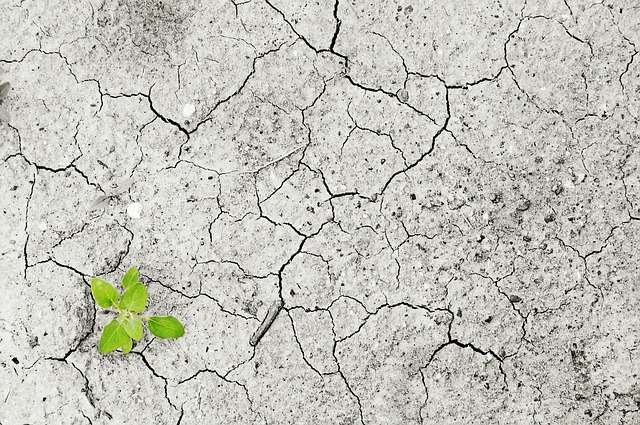Climate change has been a hot topic of discussion in recent years, and with good reason. Global warming is causing drastic changes to the earth’s climate, leading to an increase in natural disasters. Natural disasters such as hurricanes, floods, and wildfires are becoming more frequent and intense due to the effects of global warming. In this article, we will examine the link between natural disasters and global warming, and explore how climate change is contributing to these catastrophic events.
Understanding the Link between Natural Disasters and Global Warming
Natural disasters have always occurred, but they are becoming more severe due to global warming. The Earth’s temperature has risen by 1°C since the pre-industrial era, and this increase is causing more frequent and intense natural disasters. For example, hurricanes are becoming more destructive due to warmer ocean temperatures, which provide more energy to fuel the storm. Floods are becoming more frequent due to increased rainfall caused by a warmer atmosphere. Wildfires are becoming more widespread due to higher temperatures, drier conditions, and stronger winds.
The Role of Human Activity in Global Warming
Human activity is the main cause of global warming. The burning of fossil fuels such as coal, oil, and gas releases large amounts of carbon dioxide and other greenhouse gases into the atmosphere. These gases trap heat and prevent it from escaping into space, causing the Earth’s temperature to rise. Deforestation and land-use changes also contribute to global warming by reducing the amount of carbon dioxide that is absorbed by trees and plants.
The Consequences of Natural Disasters
Natural disasters have devastating consequences for human life, property, and the environment. Hurricanes and floods can cause widespread damage to homes, businesses, and infrastructure, and can leave communities without power or access to clean water. Wildfires can destroy entire forests, kill wildlife, and pollute the air with smoke and ash. These disasters can also have long-term economic impacts, as they can lead to a loss of jobs and a decrease in tourism.
The Need for Action
The link between natural disasters and global warming is clear, and action is needed to mitigate the effects of climate change. Governments around the world must take steps to reduce greenhouse gas emissions by transitioning to renewable energy sources and promoting energy efficiency. Individuals can also take action by reducing their carbon footprint through actions such as driving less, eating less meat, and using energy-efficient appliances.

The Hidden Costs of Climate Change: How it Affects Our Health and Well-Being
Climate change is a pressing global issue that affects all aspects of our lives, including our health and well-being. Rising temperatures, extreme weather events, and increased air pollution are just a few of the ways that climate change impacts our health.
The Link between Climate Change and Health
Climate change affects our health in many ways. Warmer temperatures can lead to heat-related illnesses such as heat stroke and dehydration. Extreme weather events like floods and hurricanes can cause physical injuries and mental health problems such as anxiety and depression. Air pollution caused by burning fossil fuels can exacerbate respiratory problems such as asthma and allergies. Climate change also affects food and water supplies, which can lead to malnutrition and infectious diseases.
The Economic Costs of Climate Change on Health
Climate change not only affects our health but also has significant economic costs. The World Health Organization estimates that the direct damage costs of climate change to health will be between $2-4 billion per year by 2030. These costs are due to increased healthcare expenses, lost productivity, and decreased economic growth.
The Most Vulnerable Populations
Climate change affects everyone, but some populations are more vulnerable than others. The elderly, children, and low-income communities are more susceptible to the health impacts of climate change. These groups are more likely to have pre-existing health conditions and have limited access to healthcare services.
Taking Action to Mitigate the Health Impacts of Climate Change
Taking action to reduce the impacts of climate change is crucial to protecting our health and well-being. Governments can take steps to reduce greenhouse gas emissions and invest in clean energy solutions. Individuals can make changes in their daily lives such as reducing energy consumption, using public transportation, and eating a plant-based diet. Improving access to healthcare and implementing adaptation measures in vulnerable communities can also help mitigate the impacts of climate change on health.
Climate Change and Biodiversity: The Effects on Our Planet’s Ecosystems
Climate change is not just affecting our weather patterns but also the delicate balance of biodiversity on our planet. Biodiversity is the variety of life on Earth, from the smallest microbes to the largest mammals. This diversity is essential for the proper functioning of ecosystems, and climate change is putting it at risk.
The Link between Climate Change and Biodiversity
Climate change is affecting biodiversity in various ways. As temperatures rise, plants and animals are forced to adapt to new conditions, and many species are struggling to survive. Changes in temperature and rainfall patterns are affecting the timing of migration, breeding, and hibernation, leading to disruptions in food webs and ecosystems. Additionally, rising temperatures and ocean acidification are causing coral bleaching, which is damaging marine ecosystems and impacting fisheries.

The Consequences for Ecosystems
The loss of biodiversity due to climate change can have serious consequences for our planet’s ecosystems. Ecosystems rely on biodiversity to function properly, and the loss of species can cause a ripple effect throughout the food chain. For example, if a predator species disappears, it can cause an increase in the population of its prey, leading to overgrazing and soil erosion. This, in turn, can have impacts on water quality and quantity, further disrupting the ecosystem.
The Economic Costs of Biodiversity Loss
The loss of biodiversity due to climate change also has significant economic costs. Ecosystem services such as pollination, water filtration, and carbon sequestration are essential to our economy and our well-being. The loss of these services due to biodiversity loss can have economic impacts such as decreased agricultural productivity, increased water treatment costs, and increased costs associated with natural disasters.
Taking Action to Protect Biodiversity
Protecting biodiversity is crucial to the health of our planet’s ecosystems and our own well-being. Governments, businesses, and individuals can take action to mitigate the effects of climate change on biodiversity. This includes reducing greenhouse gas emissions, investing in renewable energy, protecting and restoring habitats, and promoting sustainable agriculture and forestry practices.
The Role of Technology in Mitigating Climate Change
Climate change is a global issue that requires urgent action to mitigate its impacts. One of the ways we can tackle this problem is through technology. Advances in technology have made it possible to reduce greenhouse gas emissions, improve energy efficiency, and develop renewable energy sources.
Renewable Energy Sources
Renewable energy sources such as solar, wind, and hydroelectric power have become more accessible and affordable due to advances in technology. These energy sources produce zero emissions and have the potential to replace fossil fuels as our primary energy source. The development of energy storage systems and smart grids can also help ensure a reliable and consistent supply of renewable energy.
Energy Efficiency
Energy efficiency technologies can help reduce energy consumption and greenhouse gas emissions. Advances in lighting, heating, and cooling systems, as well as insulation and building materials, can help reduce the energy demand of buildings and homes. Energy-efficient appliances, vehicles, and industrial processes can also reduce energy consumption and emissions.
Carbon Capture and Storage
Carbon capture and storage (CCS) technologies can capture carbon dioxide emissions from power plants and industrial processes and store them underground. CCS has the potential to significantly reduce greenhouse gas emissions from these sources and is an important tool in mitigating climate change.
Smart Agriculture
Agriculture is a significant contributor to greenhouse gas emissions, but technology can help reduce its impact. Precision agriculture technologies can help farmers reduce inputs such as fertilizer and water, leading to lower emissions and increased yields. Sustainable forestry practices and the development of alternative materials can also help reduce the emissions associated with deforestation.
Conclusion
Technology has the potential to play a significant role in mitigating climate change. Renewable energy sources, energy efficiency technologies, carbon capture and storage, and smart agriculture are just a few examples of the solutions that can help us transition to a more sustainable future. Governments, businesses, and individuals must work together to invest in these technologies and ensure that they are accessible and affordable to all. By taking action today, we can help mitigate the impacts of climate change and create a more sustainable and prosperous future for ourselves and future generations.
